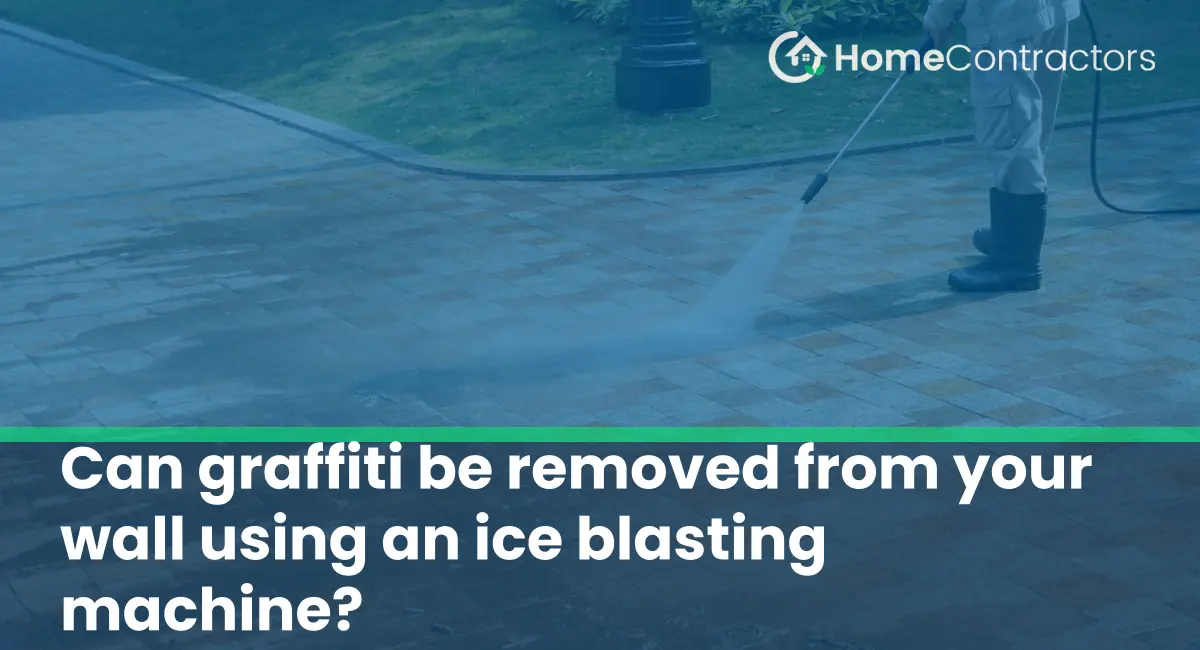When the dry ice pellets hit the graffiti-covered surface, they undergo a phase change, transitioning from a solid to a gas state. This phase change creates a localized pressure known as “thermal shock,” which causes the graffiti to loosen and break apart. Additionally, the extreme cold temperature of the dry ice (-78.5°C or -109.3°F) causes the graffiti to become brittle, further aiding in its removal. As a result, the graffiti can easily be wiped away, leaving the original surface unaffected.
Benefits of Using an Ice Blasting Machine for Graffiti Removal:
- Environmentally Friendly: Ice blasting is considered environmentally friendly as it uses no chemicals, solvents, or water during the process.
- Non-Abrasive: Unlike other graffiti removal methods that may damage the substrate or surface being cleaned, ice blasting is a non-abrasive technique. It does not harm the underlying material, making it suitable for use on delicate surfaces such as wood, bricks, or metal.
- Efficient and Fast: Ice blasting can remove graffiti quickly, often with just one pass. The process does not require lengthy setup or drying time, saving both time and resources.
- Versatile: Ice blasting can be used on various surfaces like concrete, stone, glass, or even vehicles. It can effectively eliminate graffiti from walls, bridges, trains, and other structures.
- Minimal Cleanup: As the dry ice pellets sublimate into gas upon impact, there are no leftover cleaning agents or residues to dispose of. This minimizes the cleanup required after graffiti removal.
Limitations of Ice Blasting for Graffiti Removal:
- Cost: Investing in an ice blasting machine may be costly for individual property owners. Professional graffiti removal services that use ice blasting may also charge higher fees compared to traditional removal methods.
- Limited Reach: Ice blasting machines require proximity to the graffiti-covered surface due to the short-range of the pellets being propelled. This limitation may be a challenge when attempting to remove graffiti from tall or inaccessible areas.
- Safety Precautions: The extreme cold temperature of dry ice can cause skin injuries, so protective equipment and proper training are necessary for operators to ensure their safety.
Alternatives to Ice Blasting for Graffiti Removal:
If an ice blasting machine is not accessible or suitable for removing graffiti, alternative methods include:
- Chemical Solvents: Utilizing graffiti removers specifically designed to dissolve paint or ink. However, these solvents may have environmental considerations and could cause damage to specific surfaces.
- Pressure Washing: Using high-pressure water jets to dislodge and remove graffiti. This method can be effective on non-sensitive surfaces but should be used cautiously to prevent substrate damage.
- Paint Over: In situations where the graffiti cannot be completely removed, painting over it with a matching or contrasting color may be a practical solution.Ice blasting is an effective and environmentally friendly method for removing graffiti from walls and other surfaces. It offers various benefits, such as its non-abrasive nature, efficiency, and minimal cleanup requirements. However, the cost of equipment, limited reach, and the need for safety precautions should also be taken into account. When an ice blasting machine is not available or feasible, alternative methods like chemical solvents, pressure washing, or painting over may be considered. Ultimately, the choice of graffiti removal technique will depend on the specific circumstances and requirements of each situation.
